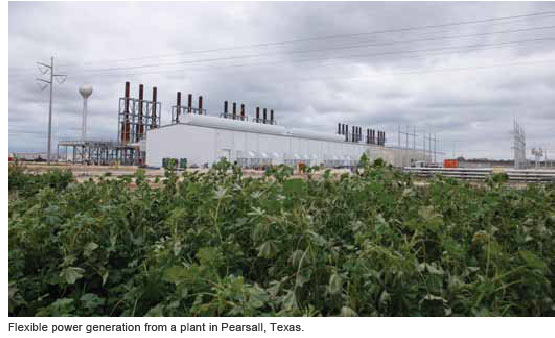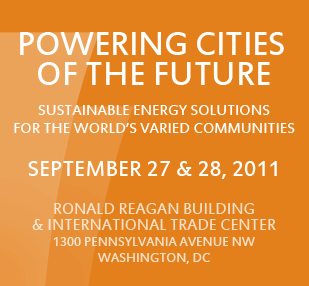By David M. Sweet
  he credit rating downgrade of the United he credit rating downgrade of the United
States, coupled with the threat of a double dip recession and abysmal employment outlook, has finally gained the undivided attention of the Obama Administration, Congress, and the phalanx of presidential hopefuls.
We know how to create jobs – almost a trillion dollars of stimulus spending did this at a whopping cost of somewhere between $222,000 and $586,000 per job, according to the Congressional Budget Office. The new round of stimulus announced by the Obama Administration will surely create more jobs – but at what cost and for how long?
Job creation is easy. Sustainable job creation is decidedly more complex.
A fascinating recent report indicates that over the last decade multinational corporations cut 2.9 million jobs in the US and added 2.4 million jobs overseas. In other words, for almost every job that was cut here, a job sprouted somewhere else, primarily in the rapidly expanding economies of China, India and Brazil.
While economists argue that the global economy is not a zero sum game, when it comes to the global job market, it most surely seems to act like one.
There are billions of people around the world willing to work long and hard for far less than the wages paid in the US – many for the equivalent of a dollar an hour, or even less. To compete today we need to end the policies and strategies of yesterday.
If the The story of natural gas is particularly remarkable, as just a few short years ago the conventional wisdom was that the US was running out of natural gas and we needed to construct new receiving terminals for the import of Liquefied Natural Gas (LNG) to supplement our dwindling domestic supplies.
However, the convergence and refinement of complex production technologies, such as horizontal drilling, 3-D seismic and hydraulic fracturing, have allowed us to economically access vast shale resources and, almost overnight, reverse the domestic decline in production.
The rush is now underway to modify these import facilities to allow for export of US natural gas.
The impact on jobs is profound.
The natural gas industry is reported to directly employ about 622,000 people and indirectly sustain an additional 2.2 million jobs.
The recent activity around shale gas production created 88,000 jobs in Pennsylvania alone during 2010, according to Penn State University.
But where things really start to get interesting is when you look at the multiplier effect that reasonable and stable natural gas prices can have on other sectors of the economy.
For example, a recent study by the American Chemistry Council found that a modest increase in natural gas production from shale could generate more than 400,000 new jobs in the United States, more than $132 billion in US economic output and $4.4 billion in new annual tax revenues.
Another recent study by Wood Mackenzie found that if the US makes the right policy choices with respect to natural resource production, expanded activity could support an additional 1.4 million jobs by 2030.
 And while studies are nice, the real proof is in the actual jobs and investments already underway, such as the announcements by a number of chemical companies to construct new facilities and restart plants that were idled as a result of the recession and natural gas prices that were several times higher than they are today. And while studies are nice, the real proof is in the actual jobs and investments already underway, such as the announcements by a number of chemical companies to construct new facilities and restart plants that were idled as a result of the recession and natural gas prices that were several times higher than they are today.
But the story gets even better. The abundance of natural gas supplies will lead to a transformation in the way that the US generates electricity, from a system dominated by coal to one where natural gas is on the rise.
Smaller, natural gas fired, distributed power plants (power generated closer to the point of use) are cleaner and more efficient than large scale coal plants located far from the end user.
As a result of advancements in generation technology, these power plants can also be started and stopped quickly and often, unlike base load coal plants which do not allow for “cycling’.
What this means, is that natural gas will also be an enabler of clean renewable generation, such as wind and solar. Because the wind does not always blow when we want, and the sun does not generally shine at night, natural gas-fired generation can balance out this intermittency and work hand in hand with clean renewable technologies.
Recent regulatory changes announced by the Federal Energy Regulatory Commission (FERC) will allow the integration of these renewable and distributed resources on a more seamless basis and eventually create a robust market for “ancillary services” to support the transmission grid.
So if we really want to get America back to work with sustainable, market driven, high paying jobs, we need to couple the talents of our highly skilled, motivated, educated and creative labor force with other “comparative advantages” of the United States.
Our natural gas resource base is the foundation for a core advantage that can be leveraged across the economy.
The same technology that is revolutionizing natural gas production is also being applied to our vast oil fields. After a long downward slide in US oil production beginning in 1970, we are finally starting to see a reversal.
These fields hold billions of barrels of oil which, at today’s prices, can be economically produced, create energy security, domestic jobs and make us even more competitive globally.
Einstein said that insanity is doing the same thing over and over again and expecting different results. We can’t just continue spending more money that we don’t have on marginal projects in the hope that this will drive growth. In other words, we need to develop policies that allow us to capture our comparative advantages.
That is not to say we need a wholesale rollback of the many environmental protections in place. Clean air, land and water are also a comparative advantage of the United States and the envy of our competitors in China and elsewhere.
A recent Department of Energy advisory report set forth a number of constructive suggestions to safeguard the environment and the public in the process of developing our shale resources. But we need to understand that poverty also kills and disables, and is a decidedly cruel executioner.
To get back on track, somebody needs to get out there and sell America to the global business community and let them know that we are open for business and the best place to locate.
There is over a trillion dollars of cash parked offshore by US companies waiting for a reason and opportunity for them to repatriate. Affordable, reliable and clean energy should become part of the mantra, the elevator pitch, the slide deck of everyone from the Department of Commerce, DOE and Environmental Protection Agency to the White House.
The next decade is not a sure thing for the US economy. If we go on our merry way thinking that we can just spend our way back to prosperity through more stimulus and negative interest rates, then we might as well pop all the champagne now and turn out the lights.
The usual strategy of a frequent flyer is to try to find some way to get an upgrade – pay for coach and sit in business or first. Given all the money spent on stimulus, with relatively little lasting effect, the United States has been paying for first class service and not even getting a seat on the plane.
While the new energy paradigm is not the only answer to our nation’s economic plight, it is surely one of the key selling points that will allow us to compete globally and bring back the jobs that have been lost over the last decade.
Energy is the lifeblood of our economy, and these new supplies of natural gas and clean and efficient power will provide a much needed transfusion to a patient that is rapidly in decline.
It really isn’t that complicated – we just need sensible government policies that protect the environment, safety and the economy. We need a strategy to capitalize on our strengths and minimize our weaknesses.
America has plenty of miles in the bank for an upgrade – now is the time to start cashing them in.
David M. Sweet is the Executive Director of the World Alliance for Decentralized Energy and President of the Natural Gas Roundtable. He can be reached at: dsweet@localpower.org
|


